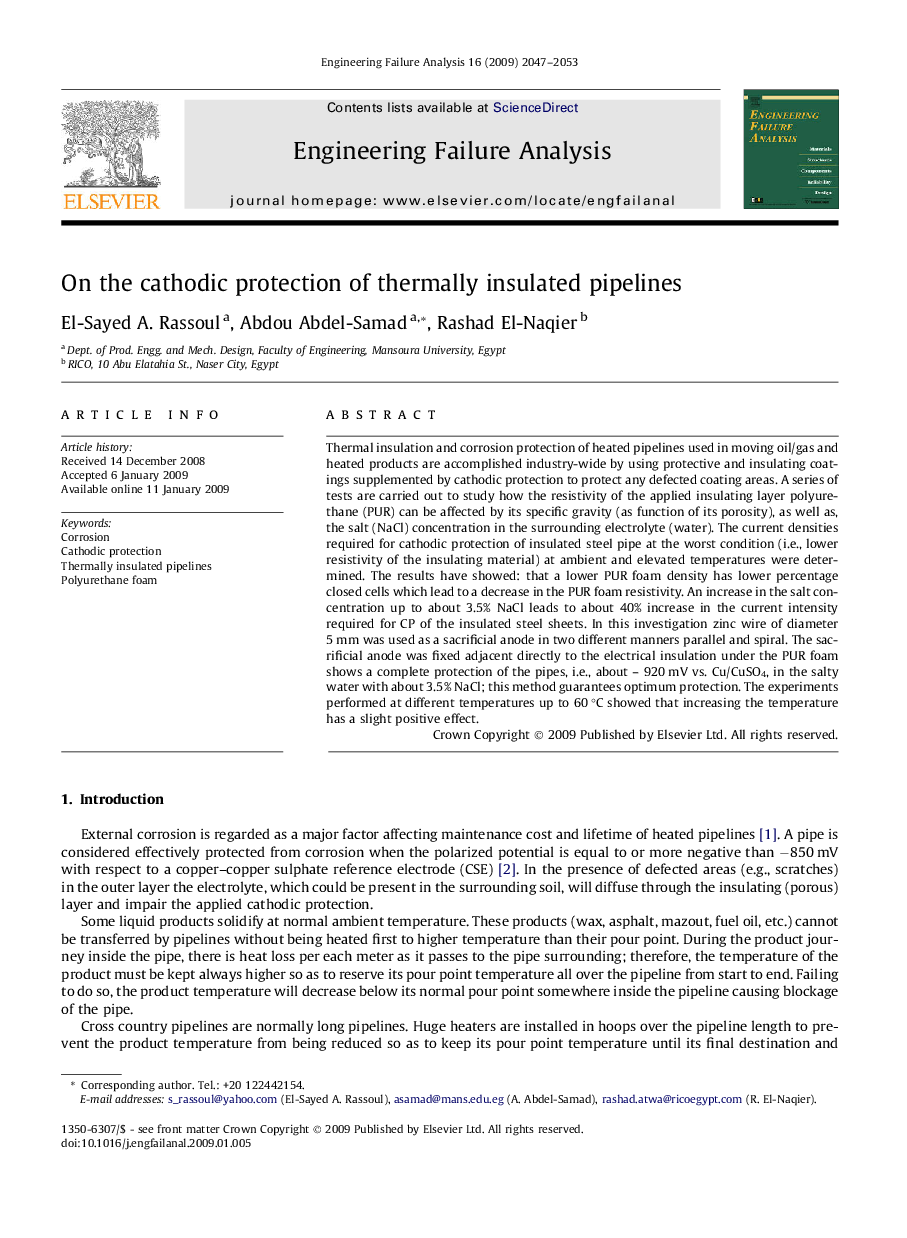| کد مقاله | کد نشریه | سال انتشار | مقاله انگلیسی | نسخه تمام متن |
|---|---|---|---|---|
| 769438 | 897392 | 2009 | 7 صفحه PDF | دانلود رایگان |

Thermal insulation and corrosion protection of heated pipelines used in moving oil/gas and heated products are accomplished industry-wide by using protective and insulating coatings supplemented by cathodic protection to protect any defected coating areas. A series of tests are carried out to study how the resistivity of the applied insulating layer polyurethane (PUR) can be affected by its specific gravity (as function of its porosity), as well as, the salt (NaCl) concentration in the surrounding electrolyte (water). The current densities required for cathodic protection of insulated steel pipe at the worst condition (i.e., lower resistivity of the insulating material) at ambient and elevated temperatures were determined. The results have showed: that a lower PUR foam density has lower percentage closed cells which lead to a decrease in the PUR foam resistivity. An increase in the salt concentration up to about 3.5% NaCl leads to about 40% increase in the current intensity required for CP of the insulated steel sheets. In this investigation zinc wire of diameter 5 mm was used as a sacrificial anode in two different manners parallel and spiral. The sacrificial anode was fixed adjacent directly to the electrical insulation under the PUR foam shows a complete protection of the pipes, i.e., about – 920 mV vs. Cu/CuSO4, in the salty water with about 3.5% NaCl; this method guarantees optimum protection. The experiments performed at different temperatures up to 60 °C showed that increasing the temperature has a slight positive effect.
Journal: Engineering Failure Analysis - Volume 16, Issue 7, October 2009, Pages 2047–2053